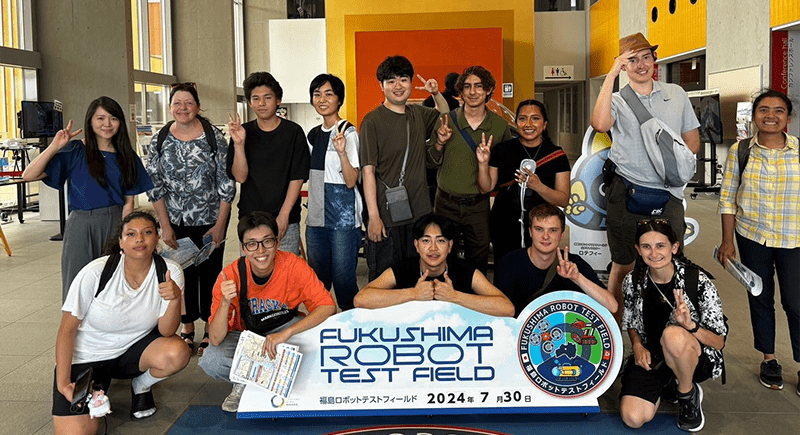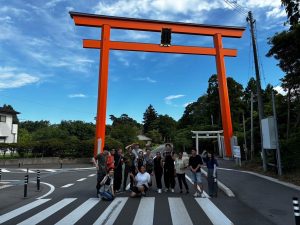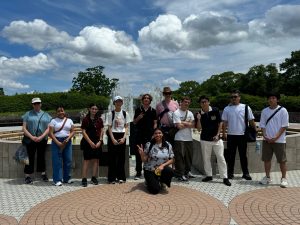
October 24, 2024 WSU Tri-Cities students explore impacts of nuclear technology as part of exchange program
By Lacey Desserault
In a powerful exchange of culture and science, students and faculty from Washington State University Tri-Cities and Columbia Basin College embarked on a transformative journey to Japan, immersing themselves in the history of a nation shaped by nuclear legacy.
 WSU Tri-Cities students Michael Jordan (’26 BS Elec. Eng.) and Brianna Salois (’25 BS Civ. Eng.) were accompanied by Sarah Newcomer, associate professor of literacy education, for the sixteen-day trip in July and August. The students stayed with local host families, where they were welcomed into Japanese culture and home life.
WSU Tri-Cities students Michael Jordan (’26 BS Elec. Eng.) and Brianna Salois (’25 BS Civ. Eng.) were accompanied by Sarah Newcomer, associate professor of literacy education, for the sixteen-day trip in July and August. The students stayed with local host families, where they were welcomed into Japanese culture and home life.
The program is part of a student exchange with Higashi Nippon International University (HNIU) and the National Institute of Technology-Fukushima College (NIT-FC). Ten students from the two universities spent two weeks visiting WSU Tri-Cities and CBC last spring.
The program was rooted in establishing connections with learning about the Hanford site and the impacts of nuclear in Japan, both from the bombings during WWII and from the Fukushima accident, each contributing to understanding nuclear energy’s benefits and challenges. The trip allowed students to compare how the US and Japan handle nuclear issues, particularly in community impact and revitalization efforts after nuclear contamination.
Traveling to Hiroshima, Nagasaki, Fukushima, and Iwaki City, the group visited several significant locations, each providing insight into how nuclear technology impacted Japanese society before and after the bombings of Hiroshima and Nagasaki, and the nuclear accident of Fukushima:
- Hiroshima: The group toured the Peace Memorial Park and Museum, where they reflected on the devastating impacts of the atomic bomb and learned about ongoing efforts to promote peace and nuclear disarmament. They participated in discussions with local students and peace advocates, gaining a deeper understanding of the historical and cultural significance of the 1945 bombings.
- Nagasaki: The group visited the Nagasaki Atomic Bomb Museum and Peace Park, furthering their knowledge of the city’s resilience and recovery following the bombing. They also engaged with local organizations focused on nuclear disarmament and rebuilding efforts, enriching their perspectives on post-war recovery and international peace initiatives.
- Fukushima: The students traveled to the Fukushima site and spent time at a museum detailing the nuclear accident of 2011 caused by a 9.5 magnitude earthquake and tsunami. They observed how a local string factory plays a major role in revitalizing the region, which faces challenges in attracting residents back due to the stigma of nuclear radiation.
- Iwaki City: The group explored the Hawaiian-themed Iwaki resorts, a coal museum, and met the mayor of the city. Students experienced Japanese culture, including a traditional dance festival in which they participated, and were interviewed by a local newspaper.
The students explained that seeing the aftermath of nuclear technologies used in WWII and during the Fukushima accident was impactful. They were surprised by how the stigma of radiation continues to keep people from returning to Fukushima, especially when compared to other places in the US like the Tri-Cities’ proximity to the Hanford site.
“I’ve grown up hearing about the Hanford site and learning about it for years, so seeing the results of what was produced there over in Japan was kind of heartbreaking, honestly,” said Salois. “But then on the other side, with the Fukushima plant, I didn’t realize the importance of revitalizing the community. Here, we never had to worry too much about revitalizing the community, but in Fukushima, after the plant disaster, people didn’t want to move back. I never had to think about what effect a disaster like that would have on a community who didn’t want to move back.”
Prior to their trip overseas, the students participated in team-building activities and studied basic Japanese language and etiquette, so they arrived culturally prepared. They learned different practices, like expressing appreciation before and after meals, and understanding the nuances of daily life in Japan.
 The trip also reinforced the value of study abroad experiences in growing cross-cultural awareness. Newcomer emphasized how such exchanges help educators and students develop empathy for people learning to navigate new languages and cultural contexts.
The trip also reinforced the value of study abroad experiences in growing cross-cultural awareness. Newcomer emphasized how such exchanges help educators and students develop empathy for people learning to navigate new languages and cultural contexts.
“One of my favorite aspects of the trip was watching our students become friends with the Japanese students and the wonderful relationships that they cultivated,” she said.
The program is expected to continue annually, with the Japanese government providing stipends for student exchange and WSU Tri-Cities offering scholarships to assist with expenses. Both entities see this as a unique opportunity to engage in global learning, deepen historical understanding of the impacts of nuclear technology, and highlight personal growth through international education programs.
As an expansion of the partnership with HNIU and NIT-FC, WSU Tri-Cities and CBC have co-sponsored the 2024 Hanford Nuclear Legacy Lecture Series. The five-part series offers a comparative, interdisciplinary exploration of the Hanford Site’s historical development, environmental impact, and regional revitalization efforts, held on Thursday afternoons during the fall term. Learn more about the lecture series here.




